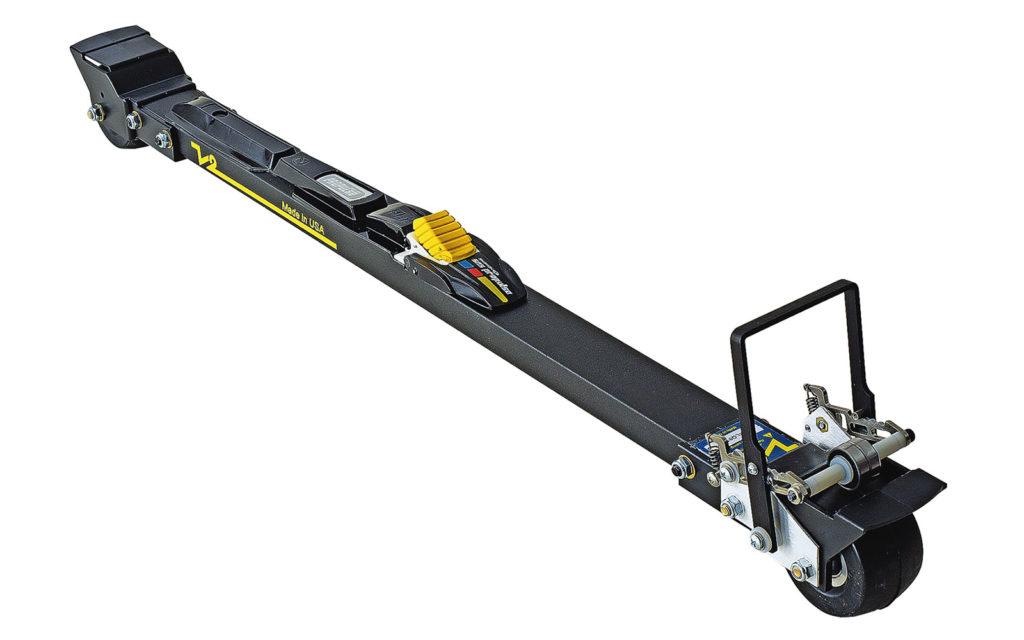
“You can make [the skis] slip if you start kicking like wax never slips. This is super important for folks focusing on technique as it’s really easy to start the on-snow season with ‘roller ski’ kick, which can lead to technique issues for months.”
Jenex.com | $359 | 880g [708mm]
V2’S SKIS are known for having a myriad of adjustments and accessories. Think speed reducers, brakes and, a tester favorite, tracking adjusters. V2 says that very few people—if any—have perfect body geometry, which makes tracking rollerskis difficult from a manufacturer’s perspective. Each pair of their XLQ920 skis has an adjustment on the axle that moves the tracking one way or the other depending on whether your body naturally pushes the ski out or pulls it in. One tester with years of high-level technique training noted that “you can make [the skis] slip if you start kicking like wax never slips. This is super important for folks focusing on technique as it’s really easy to start the on-snow season with ‘roller ski’ kick, which can lead to technique issues for months.” The same tester attributed this difference to the fact that V2 uses a ratchet in their front wheel (as opposed to the back) to simulate the kick.
Description from V2:
The new composite forks with built in fenders are just one of the five vibration-absorbing materials in the new XLQ hybrid construction. The three XLQ98 models are identical except for wheel speed. The XLQ98M is medium speed, the MS is medium slow and the S is slow. The rolling resistance of the slow wheels is increased using our patented ISR (internal speed reducer) that weighs only 10 grams. The wheel forks, with the built in fenders, use the same strong Du Pont™ composite material that we have employed on the V2-900 and V2-800 series for many years. The wheel and the wheel fork mounting bolts are forged in 7075T6 aluminum, protected with a black anodic coating, and are 3 times lighter than the conventional steel bolts used by most of our competitors.